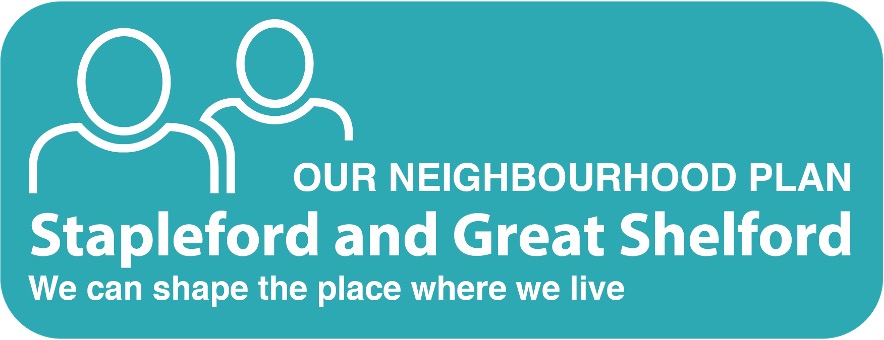A steering group of Stapleford and Great Shelford parish councillors and residents has been making good progress on the early stages of the villages’ combined neighbourhood plan. There’s a lot going on behind the scenes – notably finalising a questionnaire for initial community engagement and planning the logistics of rolling this out – but not so much to report on this month. That said, I would like to introduce our new logo for the project, designed to make our communications about the neighbourhood plan more readily identifiable and unite the various strands of work under a common theme: “we can shape the place where we live.”

I thought this would also be a good time to briefly review some other neighbourhood plans which have recently been completed and incorporated into the statutory planning process, giving a sense of what we might be able to achieve with our own. Foremost amongst these are Foxton, Fulbourne and Gamlingay. In none of these instances is development not being permitted (since this is not the purpose of neighbourhood planning), but it is being defined by locally important parameters.
Readers will probably be familiar with Greater Cambridge Partnership’s plans for hundreds of car parking spaces and a pedestrian footbridge linking Foxton rail station platforms, intended to allow people to use public transport to complete their journey into Cambridge rather than drive all the way. Foxton’s neighbourhood plan was keen to ensure that the village itself would benefit if a travel hub was created nearby, rather than its own needs being sacrificed for the ‘greater good’. To this end, a new statutory planning policy now exists: “Any proposal for a travel hub must clearly demonstrate its benefits to the community of Foxton, including integrated transport services and employment opportunities, whilst minimising negative impacts on traffic and congestion, residential amenity, and the local environment.”
A key objective of Fulbourne’s neighbourhood plan is to retain its identity as a village separate from Cambridge and protected by greenbelt, a feature which 97% of respondents supported in its community questionnaire. Such is the importance of its rural, village identity that the neighbourhood plan has six policies dedicated to it. One of these seeks to protect 16 specified, locally important views over the surrounding landscape both into and out of the village. Another demarcates an ‘Important Visual Gap’ between Fulbourne and the boundary of the urban area of Cambridge and neighbouring villages, the dominant green aspect of which development is not permitted to encroach upon or reduce.
One of Gamlingay’s six neighbourhood plan objectives seeks to “…meet the needs of the local community by supporting new housing that is of appropriate size, affordable and adaptable. All new buildings will be built to high environmental standards.” Gamlingay recognises that it already has enough large, expensive houses and that what it needs are small, affordable (to buy and heat) homes that can adapt to their owners’ changing requirements over time. It created a policy to support this, ensuring that new housing developments provide a mix of flexible homes, in particular one- and two-bedroom dwellings and bungalows, and that all are insulated to Energy Performance Certificate rating A and fitted with electric vehicle charging points. Furthermore, all new buildings must incorporate renewable energy generation and water saving measures.
I hope this has given you a flavour of what we could achieve with a broad range of policies in our own neighbourhood plan. But that is the end point of the neighbourhood planning process. The first thing for the steering group to do is to establish what your planning-related priorities are, so we look forward to engaging with you over the coming months.
Cllr Jenny Flynn, Chair of the Neighbourhood Plan Steering Group

